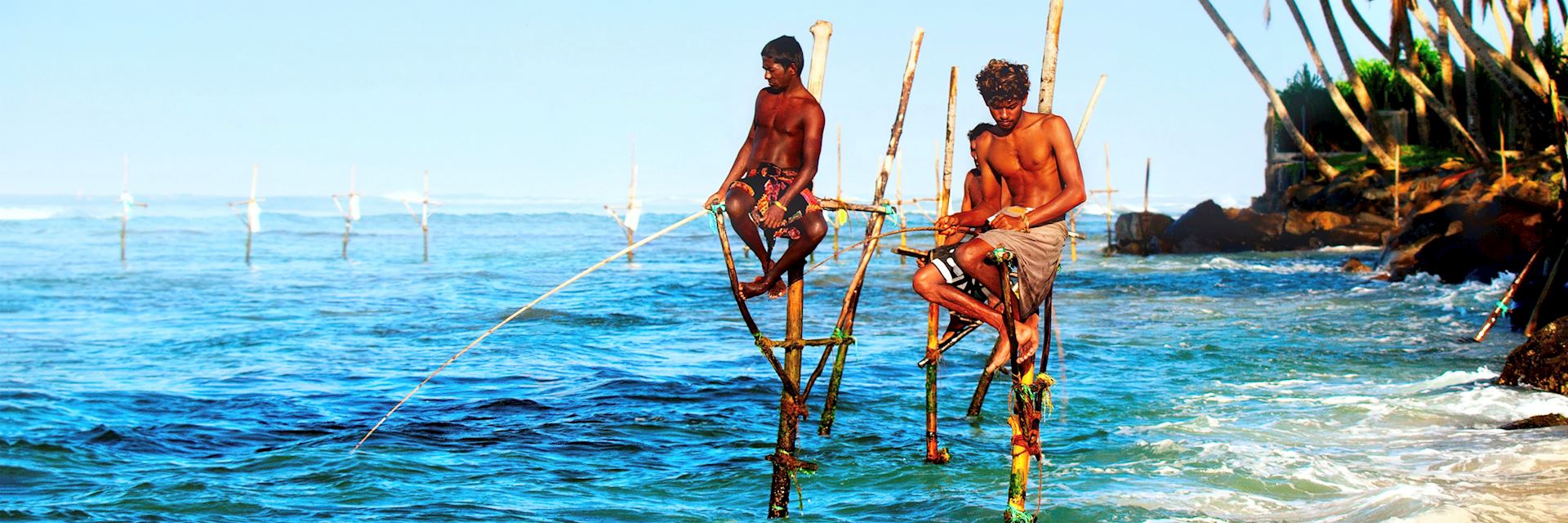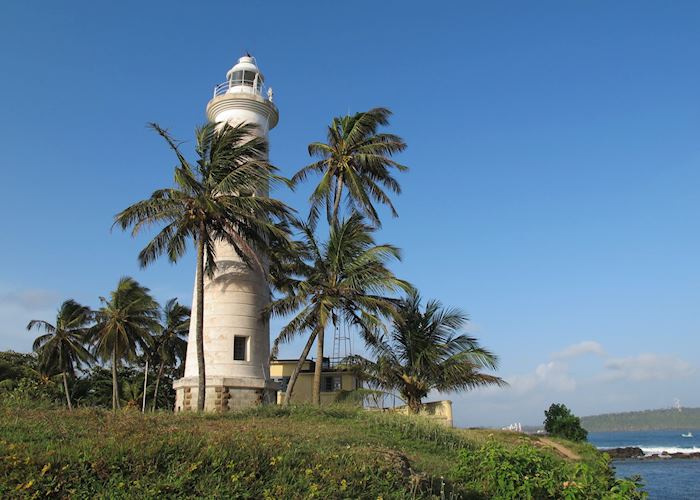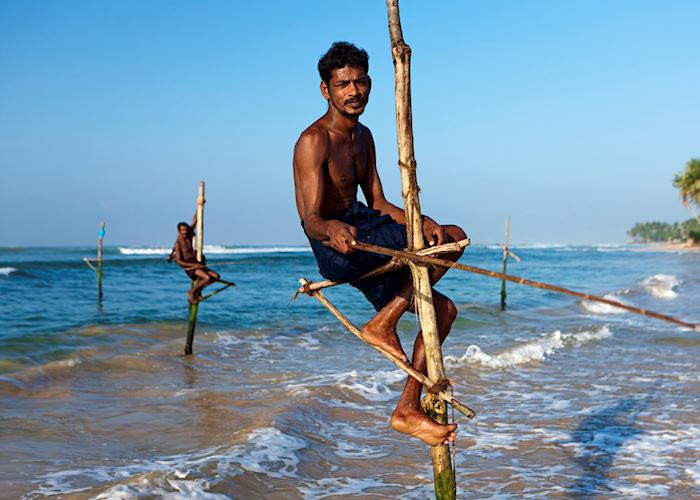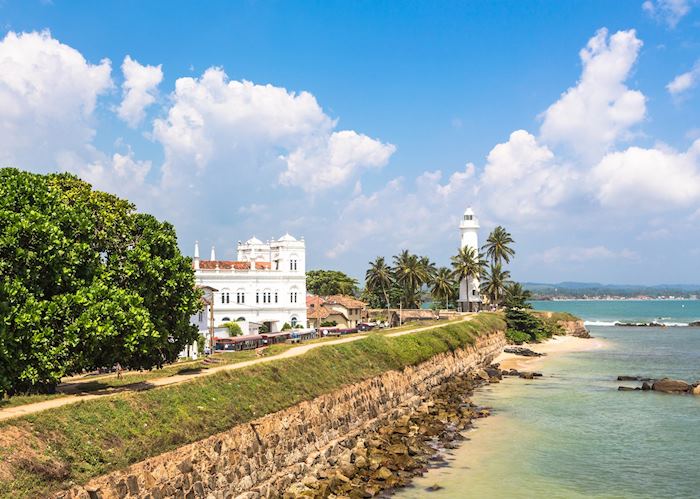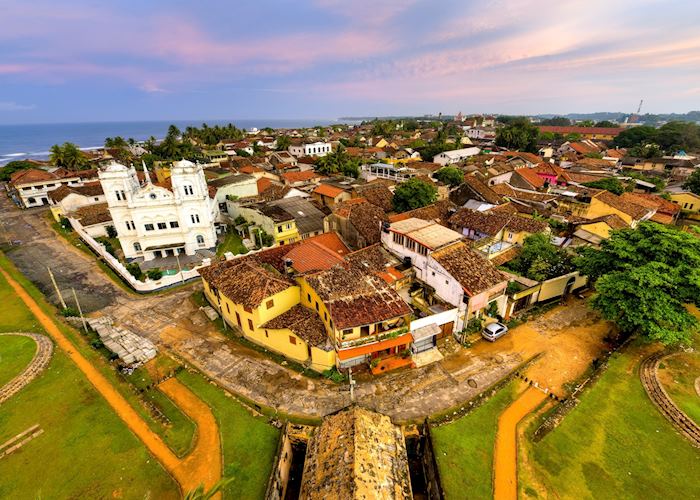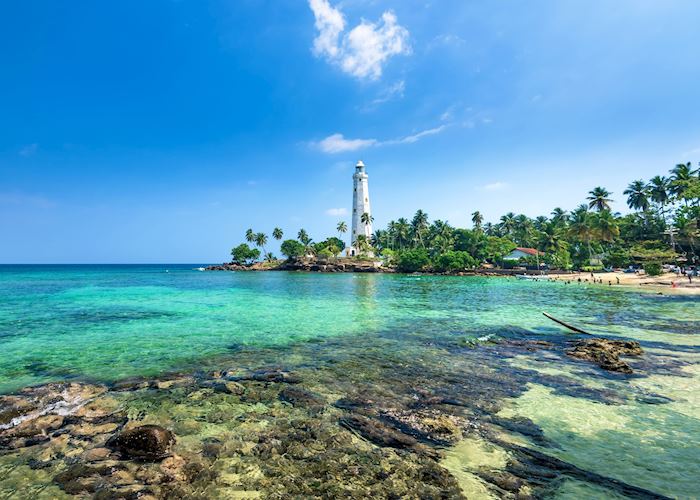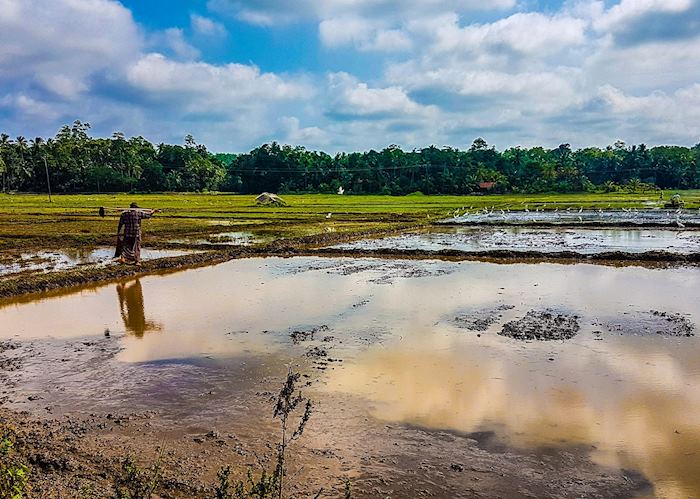It’s difficult to know who to credit with the architectural achievement of Galle. The Portuguese built this fortified coastal city in the 16th century. Then the Dutch spent 100 years enlarging the ramparts before the British added towers, a lighthouse and more gates. Perhaps the hats really come off to its current custodians, Sri Lanka’s Department of Archaeology, who’ve sensitively restored Galle while encouraging a community of artisanal boutiques, cafés and B&Bs. The modern city has now burst its walls, spreading along the coast and into the hills inland.
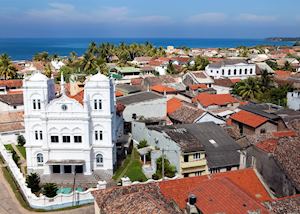 Sitting on a peninsula on Sri Lanka’s southwest coast, Galle Fort is surrounded by water on three sides. You can circumnavigate it by walking along its stone-walled battlements, stopping to wander through gateways and bastions.
Sitting on a peninsula on Sri Lanka’s southwest coast, Galle Fort is surrounded by water on three sides. You can circumnavigate it by walking along its stone-walled battlements, stopping to wander through gateways and bastions.
A UNESCO World Heritage Site, the fort is often lauded as the best example of the interaction between European styles and Asian traditions. You can delve into this further in the Marine Archaeological Museum, which occupies an old spice warehouse.
Along the northern battlements is one of the later additions to the fort: a clock tower built to commemorate the jubilee of Queen Victoria. From here, you have views over the Galle International Stadium, a cricket ground where you can sometimes see the team training. On the southern edge is Galle Lighthouse, which overlooks a frangipani-fringed beach.
A number of Dutch churches occupy space inside the fort walls, including the always freshly painted Dutch Reformed Church, whose floor is paved with gravestones from Dutch cemeteries.
Many buildings have been converted into boutiques selling locally made crafts. Others are now cafés — look out for Dairy King and its homemade ice cream. Many stay open into the evening, when you can stroll along warmly lit streets perusing the tea merchants, galleries of vintage posters, and stores filled with handmade wooden sculptures.
Outside the fortress, Galle draws visitors with stretches of rose-gold sand, framed with tangles of mangrove and frangipani trees. Unawatuna Beach to the south is the best known, but head north and you’ll find quieter stretches of coast and a selection of locally run beach hotels.
Exploring around Galle
You need about a day to take in Galle, but it’s also a good base for exploring the surrounding area. About half-an-hour’s drive away is Yatagala Temple, a mural-covered rock shrine set back from the road among the paddy fields. You’ll often have the cave and its golden reclining Buddha to yourself.
To see more of the rural landscape, take a cycling tour from Galle, passing inky-blue lakes, villages of clay-tiled homes and paddy fields in neat squares. A short cycle might take you through Eluvila Bird Sanctuary, a mangrove wetland that attracts the rare blue-eared kingfisher.
As a keen cyclist, you could tackle the hills leading to Hiyare Forest Reserve, a rainforest where Sri Lankan green pigeons and purple-faced langurs dart between the trees.
Best time to visit Galle
With its number of complex weather fronts, the Sri Lankan climate is notoriously unpredictable. We suggest discussing the time you’d like to travel with one of our Sri Lanka specialists. Generally, the best time to travel to Galle is from December to March, when it’s warm and dry.
who's been there
Start planning your tailor-made trip to Galle by contacting one of our Sri Lanka specialists
-
01993 838 92501993 838 335
- Make an enquiry

